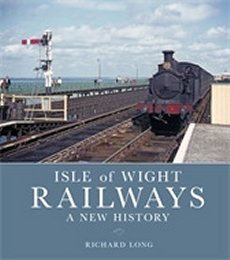Home > All Titles > Adult Non-Fiction > Transport > Railway Books > Isle of Wight Railways: New History

The Isle of Wight railways are a popular subject among railway enthusiasts. Although the network reached a maximum extent of only 55 miles and always struggled to be profitable, the special character of the island’s railways are fondly remembered by many. In this new history of the Isle of Wight’s railways, the author has researched original historical documents to produce a fresh account of the development of the network. As in the rest of Victorian Britain, numerous independent companies scrambled to build their lines but often with little chance of making a profit in underdeveloped areas. Despite the island’s small size the first two railways – the Cowes & Newport Railway which opened in 1862 and the Isle of Wight Railway which opened in 1864 from Ryde to Shanklin, then Ventnor in 1864 – were physically isolated from each other until the opening of the Ryde & Newport Railway in 1875. The companies on the island later changed to the Isle of Wight Railway, the Isle of Wight Central Railway and the Freshwater, Yarmouth & Newport Railway, and the Isle of Wight retained much of its independent character even after Grouping under the Southern Railway in 1923. However, a lack of investment and declining traffic led to closures in the 1950s and 1960s, although the line from Ryde to Shanklin was electrified and saved and the heritage Isle of Wight Steam Railway operates a section of the line from Smallbrook Junction to Wootton. The first part of this book concentrates on the author’s new history of the development of the railways on the Isle of Wight and the second part presents colour photographs of the line in the last years of operation up to 1966. The colour photographs will be predominantly previously unpublished from Mark Warburton and other collections.